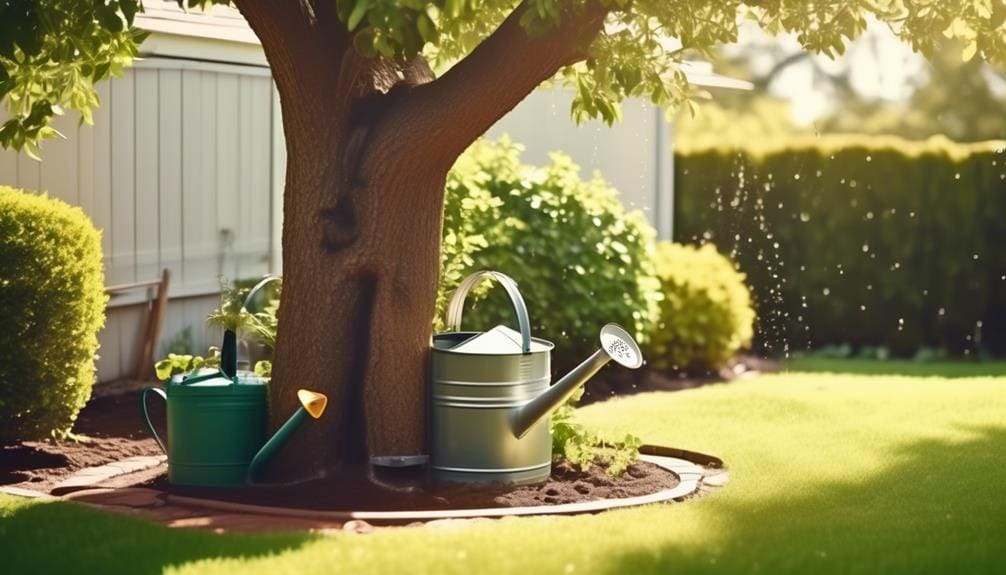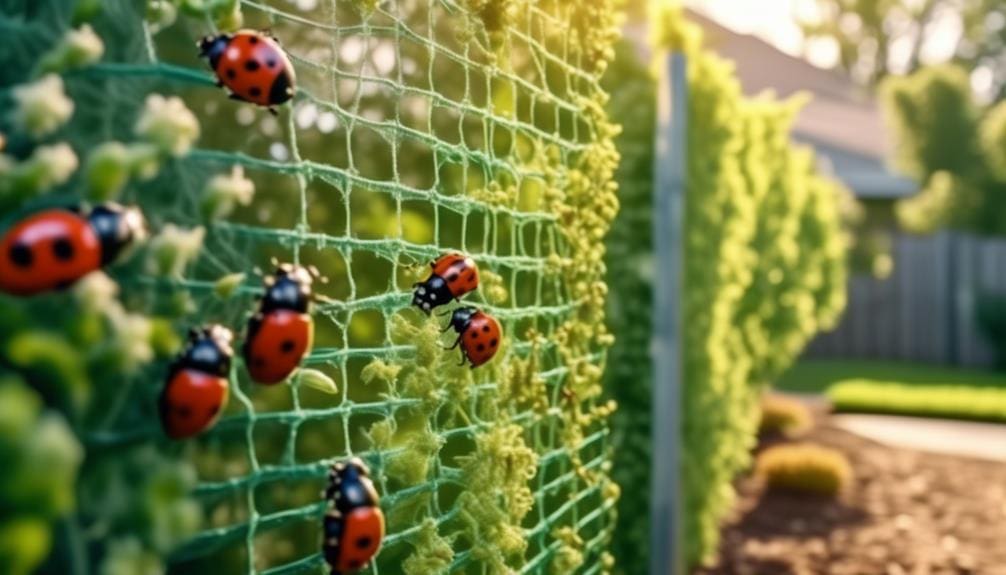Tree Trimming
Nurture Thriving Backyard Trees!
As we consider the popular adage that a tree’s health is directly proportional to the care it receives, we must examine the practical steps necessary to turn this theory into reality in our own backyards.
By sharing our collective experiences and knowledge on nurturing trees, we’re setting out to create a robust foundation for their growth and longevity. We’ve come to understand that the key to thriving backyard trees lies not only in the initial choice of species and planting location but also in the ongoing attention to their complex needs.
From ensuring optimal soil conditions to establishing best practices for watering and pruning, every action we take can significantly impact the well-being of these silent sentinels that grace our landscapes.
Yet, as we navigate the intricate web of arboricultural care, we encounter a myriad of challenges and questions that demand a deeper exploration of our green companions’ mysterious lives.
Join us as we uncover the secrets to fostering a verdant canopy that not only survives but flourishes, transforming our mundane backyards into verdant havens.
Key Takeaways
- Regularly assess tree health by looking for signs of leaf discoloration, wilting, abnormal leaf drop, cracks, cankers, peeling bark, and pest infestations.
- Optimize soil conditions by providing ample space for root spread, cultivating soil life, preserving soil integrity at tree bases, using organic mulch, and inviting native plants.
- Establish watering best practices by understanding the water needs of young and mature trees, watering deeply but infrequently, and striking a balance between under-watering and overwatering.
- Prune trees for growth and health by removing dead or diseased branches, thinning the canopy, shaping the tree to maintain its natural form, and choosing the right tree and timing for specific pruning needs.
- Protect trees from pests by selecting preventive measures, avoiding heavy equipment that damages roots, enhancing natural resilience, using environmentally sensitive solutions, and fostering large trees with robust defenses.
Assessing Tree Health
To ensure the vitality of our backyard trees, we must vigilantly look for signs of leaf discoloration, wilting, or abnormal leaf drop as early indicators of health issues. Inspecting the trunk for cracks, cankers, or peeling bark can reveal underlying problems that compromise tree health.
We must be on the lookout for pest infestations, evidenced by holes in the leaves or visible insects. Assessing the tree’s structure for leaning, broken branches, or damage is crucial for proper tree maintenance.
Healthy trees require attention to detail, including monitoring their growth patterns and ensuring they align with their species’ expectations. Consulting a Certified Arborist for pruning a tree or inspecting the root ball might be necessary.
We use organic mulch and consider soil texture to nurture robust growth and maintain our freedom to enjoy a lush, healthy environment.
Optimizing Soil Conditions
After assessing the health of our backyard trees, we must now focus on creating the ideal soil conditions to support their continued growth and resilience. Our collective efforts can boost soil fertility and guard against soil erosion, ensuring that trees roots are enveloped in a nourishing environment. We’re not just nurturing trees; we’re enhancing our freedom to breathe fresh, clean air.
- Strengthen Root Systems – Ample space means roots can spread without hitting barriers, anchoring our trees firmly.
- Cultivate Soil Life – Rich soil teems with life, providing water and nutrients essential for vitality.
- Preserve Soil Integrity – Maintaining the natural soil level at the trees’ bases prevents harmful bark rot.
- Support with Mulch – Organic mulch can improve air circulation in the soil while conserving moisture.
Let’s invite native plants to join this thriving ecosystem, enhancing air quality and our spirits.
Establishing Watering Best Practices


We’ll delve into establishing watering best practices, ensuring that our backyard trees receive the right amount of hydration without waste or detriment to their health. When we plant trees, particularly young trees, it’s crucial to understand how much water they need for optimal tree growth. Overwatering can be as harmful as under-watering, so we must strike a balance.
The best approach is to water deeply but infrequently, allowing the roots to absorb moisture thoroughly while encouraging them to grow deeper into the soil. This method supports resilience against drought and reduces the frequency of necessary watering.
For mature trees, a good rule of thumb is to water less often, as they’ve established root systems that are better equipped to access water from deeper soil layers. By following these guidelines, we ensure our trees thrive, reflecting our commitment to an eco-conscious lifestyle.
Pruning for Growth and Health
Regular pruning is essential for stimulating healthy tree growth and maintaining their structural integrity. When we prune our trees, we’re not just tidying up; we’re providing them with the freedom to grow better and stronger. By following these care tips, we ensure that the trees in our yard mature into their best selves, offering more than just shade—they become stalwarts of our eco-conscious efforts.
- Removing dead or diseased branches to safeguard the tree’s health
- Thinning the canopy to enhance light penetration and air flow
- Shaping the tree to maintain its natural form and strength
- Choosing the right tree and timing for specific pruning needs
Let’s embrace pruning for growth and health as a liberating act that empowers our trees to thrive.
Protecting Trees From Pests


Often overlooked, safeguarding backyard trees from pests is a critical step in ensuring their long-term health and vitality.
As eco-conscious caretakers, we recognize that trees need specific conditions to thrive. For instance, Red Oak and Sugar Maple are susceptible to various pests but also contribute to our 63-yard biodiversity. We must select the best preventive measures, avoiding heavy equipment that compacts much soil and damages tree roots. Instead, we focus on enhancing natural resilience, integrating pest-resistant varieties, and maintaining a balance that discourages infestations.
When a tree comes under attack, we opt for environmentally sensitive solutions, minimizing the use of harsh chemicals that could cause air pollution or harm beneficial organisms. By fostering large trees with robust defenses, we not only protect them but also preserve our cherished freedom to enjoy a healthy, natural landscape.
Conclusion
We’ve explored the essentials of nurturing backyard trees, from selection to protection.
Let’s commit to regular health checks, optimize soil, establish watering routines, and prune with care.
Together, we can safeguard our trees from pests and ensure they thrive, providing invaluable benefits to our environment and community.
As stewards of these green giants, we’ll foster a legacy of sustainability and beauty, reaping the rewards of cleaner air, energy savings, and enhanced property values.


Hello there! I’m Logan Foster, the green-thumbed social media marketer behind the vibrant world of 1800TreeGuy.com. With roots firmly planted in arboriculture, I’ve branched out to help clients cultivate their dream outdoor spaces, one leafy canopy at a time. My knack for nurturing nature is more than a profession—it’s a way of life.
When I’m not talking trees and teaching the art of arboreal care, you can find me cheering on the Bulldogs—my alma mater’s pride and my forever team. My environmental studies there didn’t just teach me about ecosystems; they instilled a lifelong passion for protecting our planet.
Off the clock, I’m an adventurer at heart. Whether it’s trekking the Appalachian trails, pedaling down a mountain path, or crafting guides to share the wonders of the wild, I’m happiest with soil under my nails and the sun on my face. And let’s not forget Yoda, my pug sidekick. He may not have mastered the art of stillness, but his joyful grins are my daily dose of happiness.
I’m all about making connections—between people and the great outdoors and between my clients and their ideal landscape visions. My approach is personal; every tree has a story, and every garden reflects its caretaker.
If you want to green your scene or share in my outdoor escapades, give me a shout on Instagram or Facebook. Let’s cultivate a conversation and grow a community rooted in a love for the lush life.















